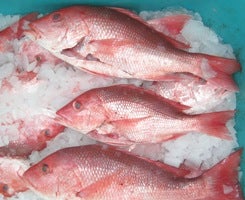A better fish tale;
New approach to end overfishing
NEWSDAY
January 8, 2009
http://www.newsday.com/opinion/editorial-a-better-way-to-end-overfishing-1.1690104
This link has the beginning of the editorial. For those who are not subscribers to Newsday, we’re hoping to obtain permission to reprint the entire piece here on EDFish.
Time to put scallops under a catch share/ITQ program to end industry – NMFS battles (Editorial)
SEAFOOD.COM NEWS
By John Sackton
Jan 8, 2009
[Editorial Comment] It’s time for the scallop industry in New England to move towards an ITQ or catch share program. If such a program were in place, much of the dispute between the industry and the New England Fishery Management Council would simply not occur.
Currently, the movement in 2011 is toward ‘accountability measures’ – such as closing the fishery if a hard cap is reached. But the accountability measures under consideration seem unlikely to change the relationship between the scallop industry and NMFS.
The reason is simple: without an effective ITQ or catch share program, the amount of scallops harvested annually misses management targets – either being more or less than predicted prior to the season. This is natural when a fishery still uses effort based management – where only the number of days fishing is controlled, and the cpue and the productivity of the fishing grounds varies. If ‘accountability’ then requires a hard cap, the industry will be hit with closures, and a race to fish will ensue.
The industry has long objected to catch shares or an ITQ system because, first, they are happy with the rotational system of closed areas and trip limits, which function similarly to catch shares to some degree, and secondly, a fully developed catch share system would raise the specter of consolidation.
In fact, the scallop industry is highly concentrated with two large owners each responsible for a significant portion of the catch. Scallop vessel owners can operate up to a limit of 17 vessels. Companies with large numbers of vessels and stacked permits can rotate crews to keep the vessels operating far beyond the nominal limits of days at sea per vessel.
Moving to catch shares would probably cap the current level of ownership for the largest scallop fleets, or even reduce it – and that is one reason it is opposed in the industry.
But it is hypocritical for the industry to flail away at NMFS without addressing the fact that more scallops were caught last year than planned. After the fact, some are arguing that the scallop landing limits were set too low. This may be true. But the best cooperative experiences in stock assessment and research take place in fisheries with catch shares – where regulators know exactly what is going to be caught, and the industry works with, and even funds, science to document stock levels, mortality, and knows what are the highest scientifically based harvest levels.










 The National Oceanic and Atmospheric Administration’s (NOAA) new catch share policy, which encourages the use of catch shares to manage fisheries, is exciting news for the Gulf of Mexico’s declining fisheries and struggling fishermen.
The National Oceanic and Atmospheric Administration’s (NOAA) new catch share policy, which encourages the use of catch shares to manage fisheries, is exciting news for the Gulf of Mexico’s declining fisheries and struggling fishermen.

 Two very thoughtful articles came out of New England earlier this week, both talking about the current difficulties groundfish fishermen are having in staying afloat financially under the current fisheries management system (
Two very thoughtful articles came out of New England earlier this week, both talking about the current difficulties groundfish fishermen are having in staying afloat financially under the current fisheries management system (